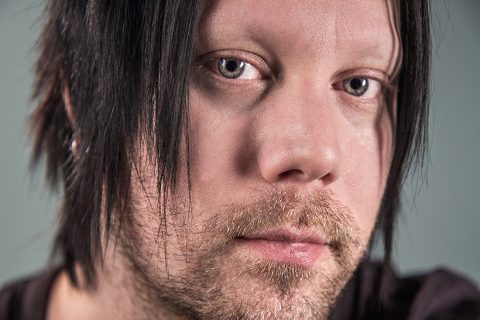
Profile: Robert Morris
Occupation/interests: VR, visual effects, fine art drawings, jewelry, and photography.
Website: http://www.mechanicalwhispers.com
Intro
It’s easy to find new VR games just by visiting the Oculus Store, Steam, Viveport, and various news outlets. It’s not the same when you’re looking for non-gaming experiences like we feature on this site. As I periodically search for new VR experiences, I’m frequently disappointed to come up empty-handed. Recently, I was excited to come across the Cabinet of Curiosities, a collection of VR environments made by Robert Morris, a creator producing VR worlds and making them available on Mozilla Hubs. The Hubs platform allows people to upload environments and share them with people without requiring any downloads. In other words, just visit the Hubs link and you can enter a new world.
Since one reason that people publish their works to Steam and the Oculus Store is to make money, it might seem like Mozilla Hubs would only be an option for giving away your work. Instead, you can keep the links private and distribute them via a creator support platform like Patreon. By pledging a given tier of money, you gain access to a selection of VR experiments and experiences.
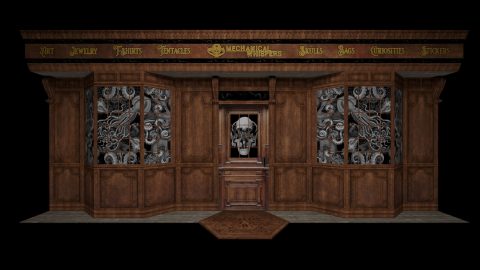
Robert focuses on abandoned, forgotten, and macabre scenes such as the Sedlec Ossuary and the works of H.R. Giger, along with his own dark creations. After making my pledge and exploring his creations in detail, I decided I wanted to get to know him a bit better. I hope you can get to know him better too.
So who is Robert Morris?
I’ve been working as a professional artist for over 25 years. I graduated SCAD (Savannah College of Art & Design) in Illustration, worked in NYC as a graphic designer, then met a lot of film friends and got into motion graphics, visual effects, and 3D. I worked on music videos, TV shows, feature films, and live stage shows throughout my career. I’ve always been a traditional artist at heart, but embraced what digital allowed me to do. Nearly 10 years ago, I started exploring photogrammetry in my free time, as well as playing with Unreal Engine and VR. I loved it! I could combine my photography and digital skills to create 3D photorealistic objects and spaces.
How did the Cabinet of Curiosities come about?
When the pandemic started… and continued, a lot changed for me, and I needed to find ways to continue creating the things I wanted to create, but still pay my bills. That’s always an ongoing process as a freelance artist. I built up my Etsy shop to try to sell my art and jewelry. And I also immersed myself in my photogrammetry and taking the data sets I had into VR, which led to the creation of the Cabinet of Curiosities. I have so many things I want to build in VR.
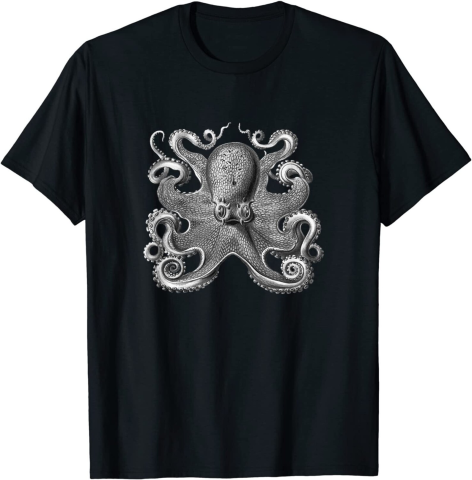
I came across Mozilla Hubs as a simple way to make some experiences public and social. It’s important that I can bring my own content into VR, with the quality control and detail that I want. I had to learn the basics of Blender (3d modeling tool) to start bringing it into a Quest 2 social experience in Hubs. It was all fun to play around with, and I got excited that other people might think so too. The social aspect has potential and could be fun for meetups, so I had the thought to open up these mobile worlds to my Patreon supporters as a way to help me afford the time to create more. I haven’t seen anyone else releasing VR worlds to Patreon supporters, and I certainly have the content to build them, so why not? I have so much content sitting on my hard drives, from all my years of traveling and scanning. The only limitation is time.
What’s your typical workflow? How do you go from concept to completion?
For my workflow, I lean towards taking my time to get the best quality I can. I really enjoy the entire process, so it’s not about getting it done as fast as possible. I think and re-assess things throughout the process, too. Just like I approach creating a piece of artwork like a drawing. For my photogrammetry-to-VR process, I either travel to a location specifically, or happen upon one while traveling. Prior to the pandemic, I traveled a lot! And I would make a point to visit obscure, abandoned places of interest. I use a 50MP DSLR to take RAW photos for photogrammetry to try to capture as much quality as I can. I’ve been to locations where I’ve had a limited amount of time, but I still try to capture quality data. I’ve managed to put myself in a lot of locations, being there at just the right time.
After I photograph a location, I process the images to try to get as crisp and clear a dataset as I can. I use Reality Capture to compile the photos into a 3D model, ZBrush (a digital sculpting tool) and Maya (another 3d modelling tool) to clean it up and decimate it down (reduce the level of detail to allow for real-time exploration). Then I bring it into whatever end program I need to produce a result that people can view and experience. Mostly Unreal Engine for Steam releases or Blender for Mozilla Hubs, for now.
Why aren’t there more high-quality VR scenes taken from movie/TV sets?
There is huge potential for existing IP assets to be used in VR experiences. Not even a full-blown game, but more of a “museum” type experience. Even “wax museums” of characters. But getting licensing permission is the one big holdup. I just feel there’s too much red tape and short-sightedness. Those who own the IP, hold onto it without the creative motivation or ideas. Those with ideas usually don’t get access to licensing. I think even sets might be subject to copyright.
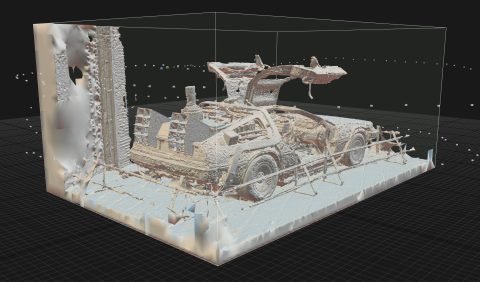
Having worked on films and TV, I do know that a lot of contracts state that everything created for a show is property of the production company. Certainly, using the IP name to describe a generic set would violate copyright. Even “fan art” is technically illegal, whether sold or not, although a lot of companies don’t go after fans unless they are profiting majorly from it. But with things moving rapidly towards digital experiences, I can see more interest in licensing digital 3D assets for VR experiences, similar to how toys are released for IP properties.
How did you get permissions for Giger’s work? They seem pretty protective of their rights from what I’ve seen.
I met Giger around 2005 at his home in Switzerland. It was an absolute thrill and surreal experience. I had become friends with his agent here in NYC and we collaborated on a few projects. One of them was the Castle Train ride project that Giger had wanted to build for his museum in Gruyeres, Switzerland that ended up being too costly to build physically. With my current interest and experimentation in VR, I pitched the idea to Giger’s agent and widow about creating a VR motion “ride” in the museum that recreated Giger’s original vision and everyone was very excited. I have a ton of ideas, and I keep pitching them to various places like the Giger museum, as well as the Sedlec Ossuary. The hard part is helping them to see their potential.

What’s the current status on the Castle Train?
His Castle Train never made it to construction, but there is a full size “ghost train” wagon car that he created, and many, many sketches for plans for the ride. Those are what I was going off of for my VR recreation, and the detail is very specific. I was also very excited to have the opportunity to scan his wagon car, as it was hidden away for so long, and in quite a state of disrepair. My inquiries into his Castle Train project thankfully got some of Giger’s inner circle excited about it again, and they found it for me, and brought it out of storage for me to scan.
What’s your biggest limitation for capture? Equipment cost? Travel cost? Rights?
I don’t really see limitations. I just see challenges to overcome. I’ve been photographing for so long that I have a lot of equipment, and I have adapted a shooting style that works with photogrammetry well. I love to travel and have been to a lot of places and been fortunate to have access to a lot of things that the general public hasn’t. Plus, I was shooting for photogrammetry when most people didn’t even know what it was. But now, I would say the biggest hurdle is financing, given the time all this takes, and finding an audience of supporters to encourage what I’m doing and help push it forward.
What Is your long-term plan? More Mozilla Spaces? Dedicated apps? Ongoing subscription content?
As for my long-term plan, I continue to expand my Etsy shop. It’s crazy encouraging that people want to buy my jewelry and art. I also keep building my VR worlds, both for Steam and for Mozilla, so more people can hopefully experience them and get as excited as I do when I get immersed in them. Patreon seems to be a very interesting way for people to support what I do and get involved in the process. I’m also trying to do more livestreams where I build things in real-time, but until I can upgrade my computer system, there’s a constant threat of crashing when I process photogrammetry and NeRF‘s (due to the load on the system).
I want to get more people involved, and to show the possibilities of what these VR experiences can do. Sure, physically traveling to places is ideal. Nothing compares to that. But I see VR as a way to inspire people to travel to these places… or even to get to visit those places that don’t exist anymore. That idea really excites me. The places that don’t exist anymore, aren’t the same anymore, or never got to exist. This is where I see VR really being something special.
I’d like to thank Robert for his time responding to questions and answering my follow-ups. Please check out his work on his main site, and if you’d like to see more content like it, consider supporting him on Patreon. Creators like Robert are working hard to let us step inside exciting new places with just our headset. I can’t wait to see what else he comes up with!
Main site: https://vr.mechanicalwhispers.com/
Patreon link: https://www.patreon.com/MechanicalWhispers


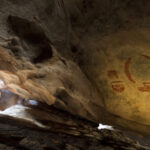
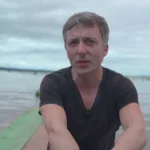

Leave a Reply